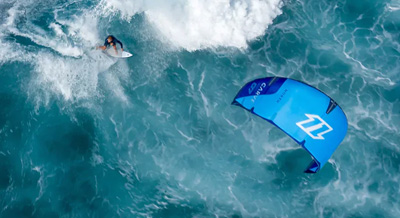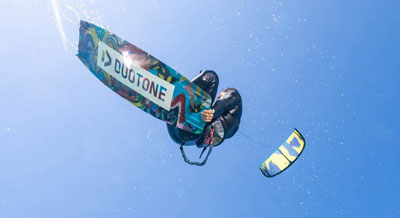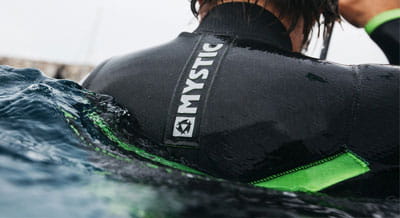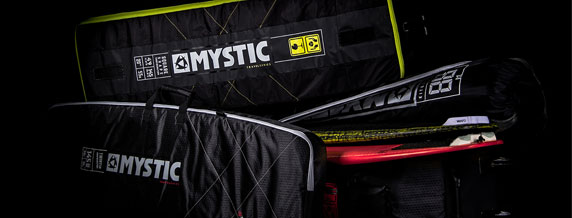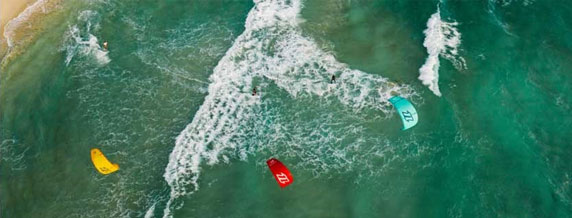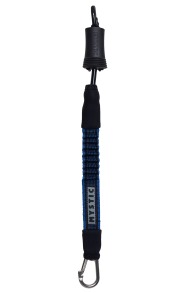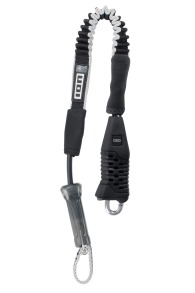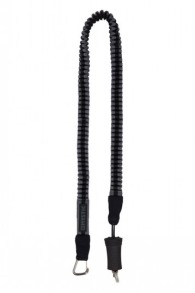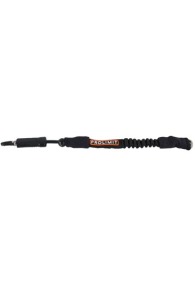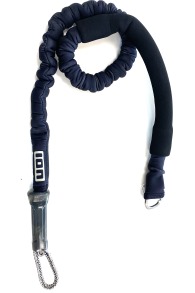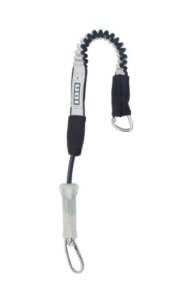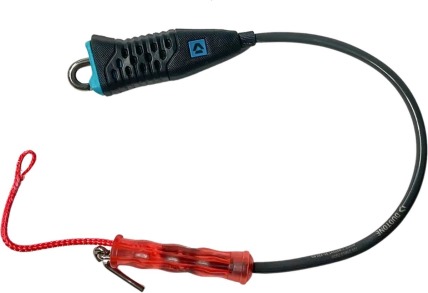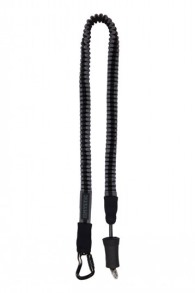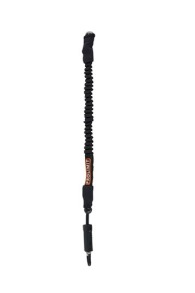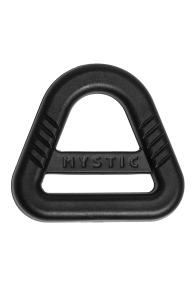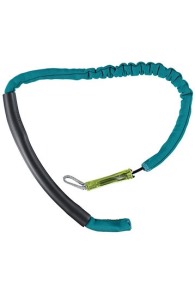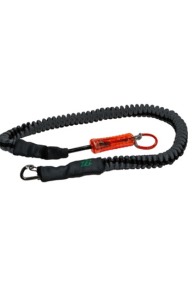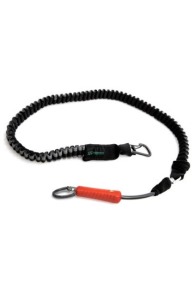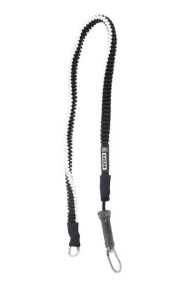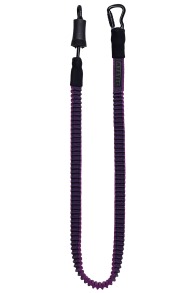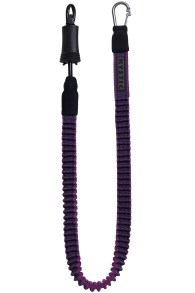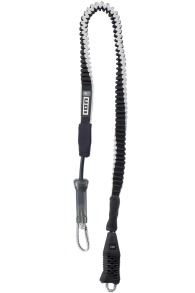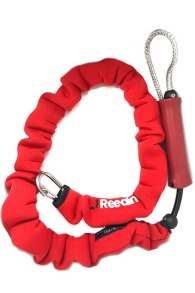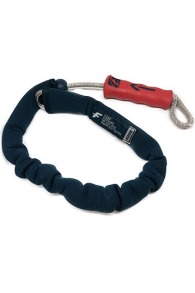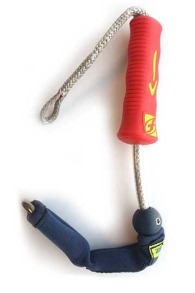Kite Leash
A kite leash is an essential part of your kite equipment that provides safety and control while kiting. The leash connects you to the safety system of your bar, ensuring that your kite doesn’t fly away when you activate the quick release. Depending on your riding style and preference, you can choose between short leashes (often used for hooked-in riding) or longer leashes for unhooked tricks and wakestyle. At Kitemana, you’ll find different types of leashes from top brands such as North, Duotone, Reedin, Naish, and Cabrinha. All leashes are made with strong materials, comfortable attachments, and reliable safety mechanisms. Whether you want maximum freedom of movement or prefer a compact setup, you’ll always find a leash here that fits your style and level. Want to know more about our leashes? Then read the info page below ».
Kite Leash
A kite leash is an essential part of your kite equipment that provides safety and control while kiting. The leash connects you to the safety system of your bar, ensuring that your kite doesn’t fly away when you activate the quick release. Depending on your riding style and preference, you can choose between short leashes (often used for hooked-in riding) or longer leashes for unhooked tricks and wakestyle. At Kitemana, you’ll find different types of leashes from top brands such as North, Duotone, Reedin, Naish, and Cabrinha. All leashes are made with strong materials, comfortable attachments, and reliable safety mechanisms. Whether you want maximum freedom of movement or prefer a compact setup, you’ll always find a leash here that fits your style and level. Want to know more about our leashes? Then read the info page below ».
Leashes at Kitemana
A kite leash may seem like a small part of your setup, but it plays an essential role in safety and comfort on the water. The leash ensures that you stay connected to your kite when you let go of the bar or activate the quick release. There are different types of leashes, each with its own benefits and applications. Freeriders and beginner kiters usually use a short leash that attaches to the front of the harness, while freestylers and wakestyle kiters prefer a longer leash for more freedom of movement when doing unhooked tricks. On this page, you’ll learn everything about the different types, materials, and attachment systems of kite leashes, and discover which one best fits your riding style and level.
Most frequently asked questions about kite leashes:
What is the purpose of a kite leash?
A kite leash might seem like a small part of your setup, but it plays a huge role in your safety while kiting. The leash ensures that you stay connected to your kite when the quick release is activated or if it accidentally opens. This prevents your kite from flying away, allowing you to safely restart or return to shore without the kite flying uncontrollably through the air.
The leash is essentially your final safety line. Without it, activating the first release would completely detach you from your kite, which can be dangerous, especially in strong winds or far offshore. A properly functioning leash gives you confidence, knowing that you’ll always stay connected but can still detach immediately when needed. Therefore, check regularly that your leash works correctly and that the clips and elastic parts are in good condition. This way, you can hit the water with peace of mind.
When should you use a short or long leash?
Whether you use a short or long kite leash mainly depends on your riding style and personal preference. A short leash is the most common choice for freeride and hooked-in kiting. It attaches to the front of your harness and is compact, lightweight, and simple. Because you’re almost always hooked in with this style, you don’t need a long leash. The advantage is that the leash gets less in the way and reduces the risk of snagging during a crash or relaunch.
A long leash is mainly used by freestylers and wakestyle kiters who often ride unhooked. In that case, you temporarily detach from your harness and need the extra length to perform tricks without movement restriction. The leash is usually attached to the back of the harness, allowing it to move freely. However, this comes with some risks: when the leash is behind you, it can be harder to reach under tension. Are you a kitesurf instructor? Then a long leash can also be very useful to attach yourself to your student so you can intervene in time during crashes. In short: hooked-in = short leash, unhooked or kite instructor = long leash.
When should I replace my leash?
Your leash is exposed to a lot while kiting: saltwater, sand, UV light, and tension forces. That’s why it’s important to check it regularly and replace it on time. If you see wear on the elastic part, damage on the carabiner, or rust on metal components, it’s time for a new one. Also, if the leash has lost its elasticity or the quick release no longer works smoothly, it’s wise to replace it. A reliable, properly functioning leash gives you the confidence to enjoy every session safely and without worry.
Which kite leash brands are available at Kitemana?
Brunotti: FEELIN’ GOOD HAS A NAME
Cabrinha: LIVE FREE. RIDE FREE.
Duotone Kiteboarding: TRUE KITEBOARDING.
F-One: WHEN YOU CHOOSE F-ONE YOU ARE CHOOSING ONE HISTORY, ONE PASSION, ONE ADVENTURE, ONE TEAM, AND ONE INNOVATION
Harlem: CHANGE THE TIDE
ION: CHALLENGING YOURSELF, EXPERIENCING NATURE, AND FEELING ITS FORCE
Mystic: PUSH THE EVOLUTION OF WATER SPORTS TOGETHER
Naish: EVERY DAY ON THE WATER IS A GOOD DAY!
North: FOR THE SEEKERS.
Ozone: INSPIRED BY NATURE · DRIVEN BY THE ELEMENTS
Reedin: AT REEDIN WE WANT TO FLY FASTER, JUMP HIGHER, AND REDEFINE ALL THE POSSIBILITIES OF KITING
Slingshot: FEEL THE DIFFERENCE
You have no product(s) in you basket.
Weet je niet waar je moet beginner?
Contact our customer service for advice

